China # 15 – Shaanxi History Museum, Terracotta Warrior Army, Xi’an – September 2014
Xi’an today is the capital of Shaanxi Province and was the first ancient imperial capital of China, having been the seat of more than 13 feudal dynasties, including the Western Zhou, Qin, Western Han, and Tang. Emperor Qin Shi Huang, the first Emperor of China, and the founder of the Qin Dynasty, conceived and built the Terracotta Army as part of his mausoleum that we had just seen a portion of. The Shaanxi History Museum was constructed in 1983 and opened to the public in 1991. It contains a massive collection of 370,000 precious relics. Located near the Terracotta Warrior site, (see blog 14), it is one of the first huge state museums with modern facilities in China and one of the largest. Of course we had to see it.
Where is your great-granny’s Tang Dynasty vase?
Now unless you are looking for a replica of your great-great-grandmother’s thousand-year-old Tang dynasty vase that you broke, or you happen to be an archaeologist searching for some bit of information or a relic that was created 2000 years ago, many parts of a museum like this can be seen quickly. I don’t mean to underplay the importance of this amazing collection, but quite honestly once you’ve seen 15 beautiful ancient pots, the next 30 are not nearly as interesting. On the other hand, you never know what you’re going to find that might strike your interest, so we walked the aisles and read the placards, many of which were in English.
For your interest and your education, we offer you here a random selection of some of the amazing items that caught our attention, some more amazing than others. After all, it was here that the historical Silk Road began before it wound its way across China and into Europe and India, crossing the seemingly impassable Taklamakan and Gobi deserts and the treacherous mountains of Tajikistan, a tortuous route that we had just spent a year and a half following.
Start of the Silk Road
The Silk Road derives its name from the lucrative trade in silk carried along its length in the beginning of the Han Dynasty (206 BCE–220 CE). Though silk was the major trade item exported from China, many other luxury goods like tea, jade, fur, lacquerware and porcelain traveled towards Europe while gold, silver, ivory, gems, glass, spices, pomegranates, carrots and “heavenly” horses (from Kyrgyzstan) were brought from the West. Most caravans only traveled short distances and then returned to the starting point. In addition to economic trade, the Silk Road was a route for cultural exchanges among the civilizations along its network and included religions, philosophies, technologies and unfortunately diseases, most notably the plague. It played a significant role in the development of the civilizations of China, Korea, Japan, the Indian subcontinent, the Middle East and Europe.
Cambulac, the new capital of Kublai Khan, Genghis Khan’s grandson
Ever since 1220, the Mongols, led by Genghis Khan, had considered Karakorum on the Mongolian Steppe to be their capital. His grandson, Kublai Khan, later decided to move his capital from Karakorum to a new location further south, deep in conquered Chinese territory. In the multilingual Mongol Empire, this new fortified city had several names. The Chinese called it Ta-tu, Marco Polo refered to it as Cambulac. Today, the city is called Beijing! It became the new eastern terminus of the Silk Road.
As a young man, Marco Polo accompanied his father Niccolò and uncle Maffeo, both merchants from Venice, Italy all the way to Cambulac (Beijing). In a travelogue from stories told by Marco Polo, Rustichello da Pisa describes Polo’s travels between 1271 and 1295 through Central Asia to Asia including his many years at the court of Kublai Khan and in the end, his return via a sea route to accompany a princess to the Middle East.
The Travels of Marco Polo
The Travels of Marco Polo became a hugely successful book and undoubtedly inspired future explorers, maybe even Christopher Columbus. The Silk Road’s name was actually coined by German geographer Ferdinand von Richthofen in 1877.
In the late 15th century, the discovery of a safer sea route from Europe to Asia dealt a damaging blow to the overland Silk Road trade. With less cost, harassment and danger, many goods and materials that the Silk Road could not transfer were conveyed through the sea route. Today, the dusty trails once followed by long strings of camels and horses are mostly paved and the caravansaries where traveling merchants could take refuge from the weather and bandits have now been converted to hotels or lie in various states of restoration or ruin. Oases towns like Khiva, Samarkand, Bukhara and Kashgar, once important stops on the Silk Road, are now major cities.
Reaching Xi’an was a bookmark in our goal to follow the Silk Road, but our second objective was to drive, wheels on the ground, from the Atlantic Ocean to the Pacific. The shores of the Yellow Sea were still a few adventures away. We will continue to followed a revised Silk Road, heading north to the city of Pingyao.
- The Shaanxi History Museum was constructed in 1983 and opened to the public in 1991. It contains a massive collection of 370,000 precious relics.
- Buddha was well represented in his many incarnations.
- Fierce masks were interesting but there was no reason why they were made.
- White porcelain figure of a foreigner, Tang Dynasty. No, it’s not Marco Polo!
- Tri colored female, Tang Dynasty
- Golden monster, Warring States Period
- Tri-colored lion, Tang Dynasty
- Tri-colored pot with four ear handles, Tang Dynasty
- White porcelain stem cup with applied design of flowers
- Tri-colored stupa-shaped pot, Tang Dynasty
- Painted stupa pot with elephant pedestal, Tang Dynasty
- Bronze “Lei” wine container with stylized dragon pattern, Mid-Western Zhou Dynasty
- White porcelain pot with two dragon shaped handles, Tang Dynasty
- Painted honor guards, Ming dynasty
- Lions standing guard at the foyer of the Shaanxi History Museum
- A guard sitting on a royal lion
- Try colored figures of Heavenly God, Tang Dynasty
- Iron Plough, Tang Dynasty
- Grain milling stone, Han Dynasty
- Ox and cart, Tang Dynasty
- Bronze swan
- There were several restorations and reproductions of horses, underlining their importance to Emperor Qin and his army. Qin Dynasty
- Horse people may find the detail of bits and bridals interesting.
- Details of a bjt and bridle
- Tri-colored horse, Tang Dynasty
- Tri-colored horse excavated from Princess Yongtai’s tomb, Tang Dynasty
- Tri-colored horse owned by a foreign leader, Tang Dynasty
- Evacuation site of bronze chariots and horses on the western side of the mausoleum of Emperor Zin Shihuang.
- Horses being restored
- Examples of the famous terracotta army, Qin Dynasty (200 BC)
- Warriors were armed with bronze weapons including spears, axes, daggers and curved knives. Others held cross-bows and quivers of arrows. All were deadly sharp, a demonstration an advanced level of metallurgy.
- Crossbow Trigger, Qin Dynasty
- Bronze Arrowheads, Qin Dynasty
- Spears
- Sword
- The heavy armor (flak jackets) worn by many of the warriors was impressive.
- The details of the sculptors’ artistry were amazing.
- A Terracotta Warrior, Qin Dynasty
- Painted Terracotta figure of a sitting archer cocking his bow, Qin Dynasty
- Camels painted pottery, Tang Dynasty
- Original colors had survived being buried for 2,000 years.
- Wax figure statue of an honor guard
- We often wondered why Chinese persist in using children’s chairs and tables at adult cafes.



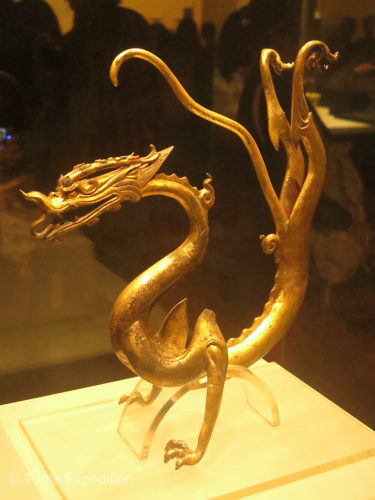
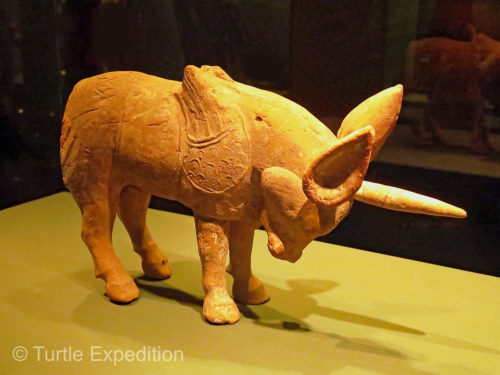
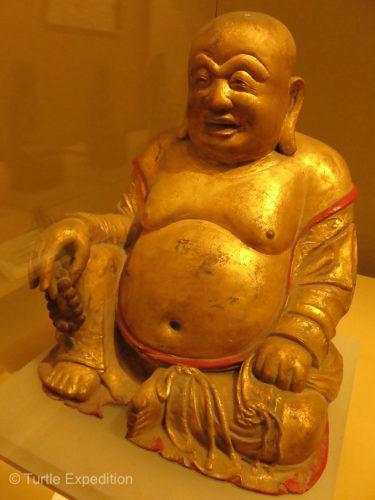
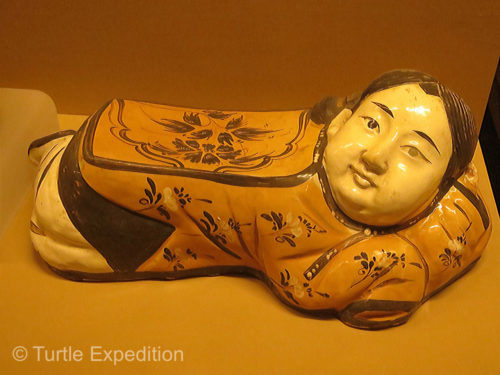
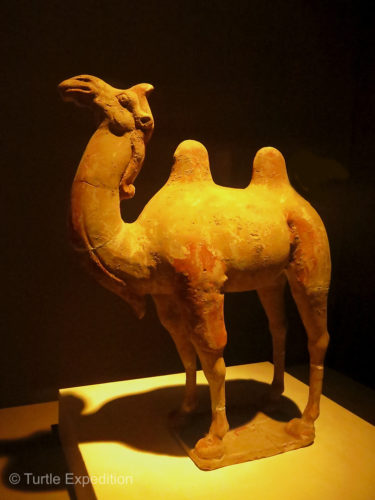
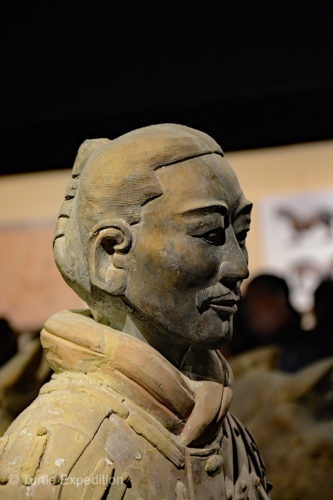
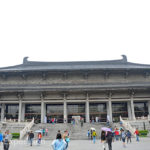
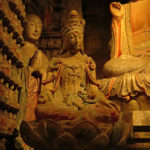
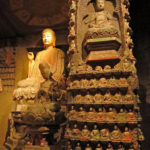
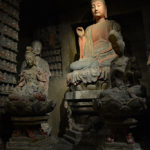
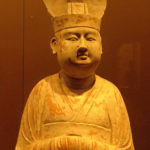
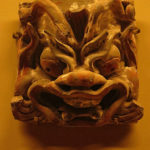
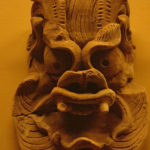
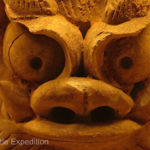
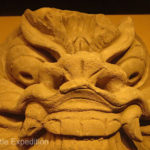
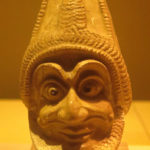
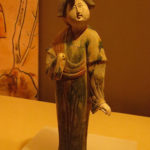
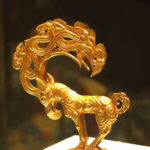
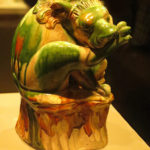
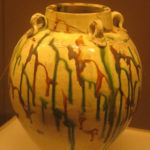
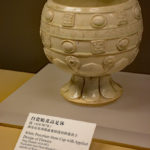
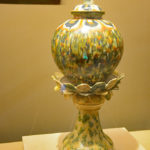
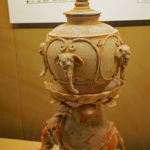
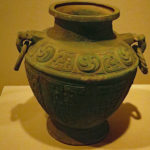
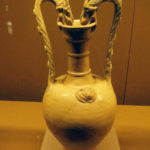
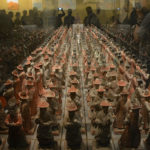
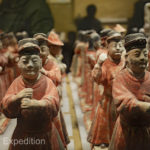
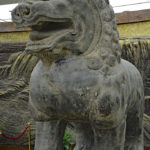
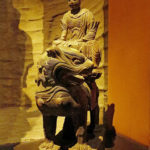
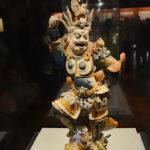
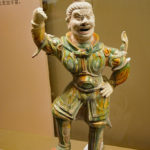
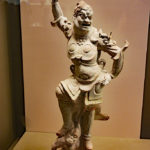
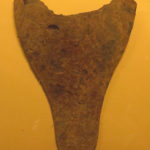
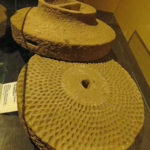
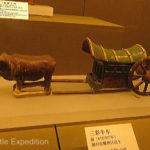
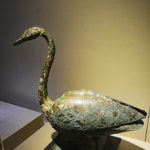
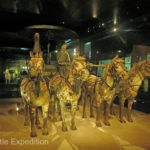
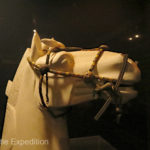
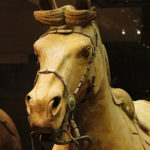
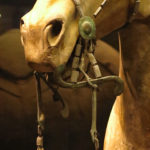
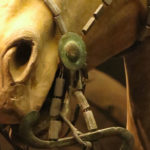
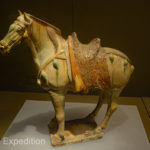
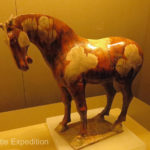
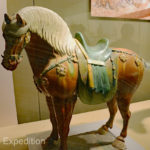
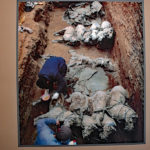
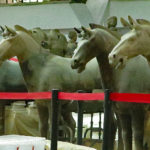
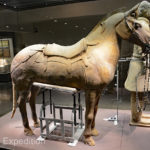
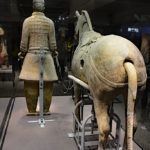
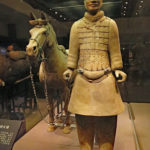
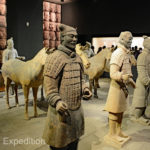
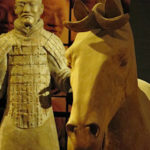
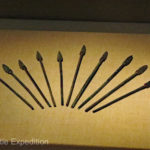
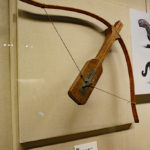
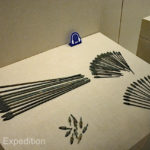
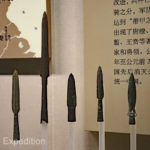
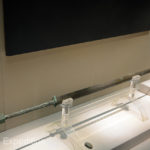
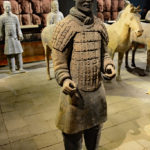
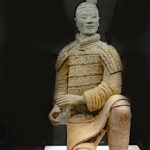
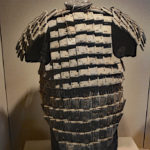
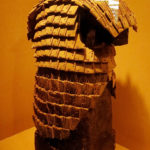
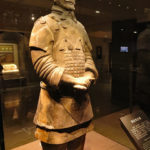
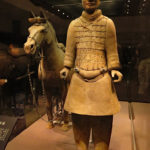
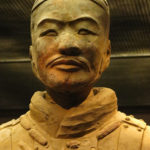
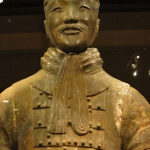
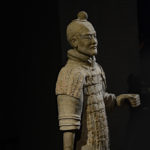
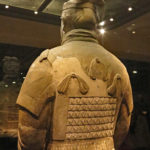
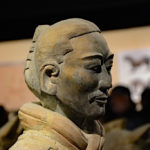
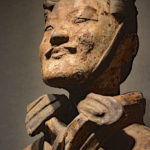
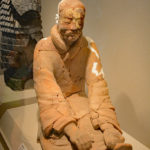
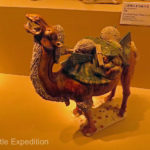
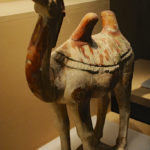
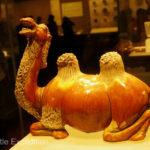
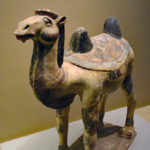
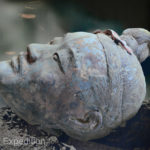
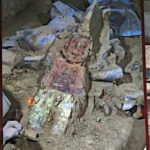
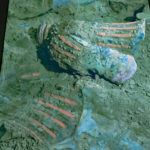
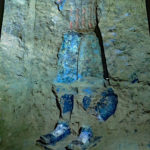
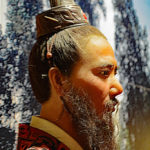
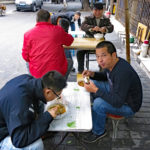
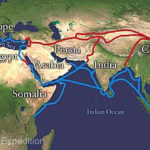





You always bring your travels to life. Thanks! L.
Thanks for the compliment!